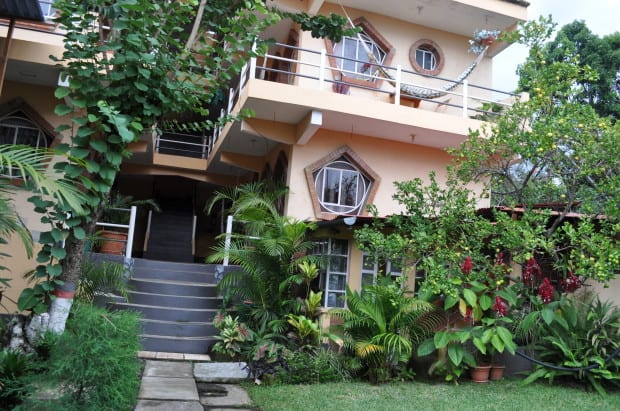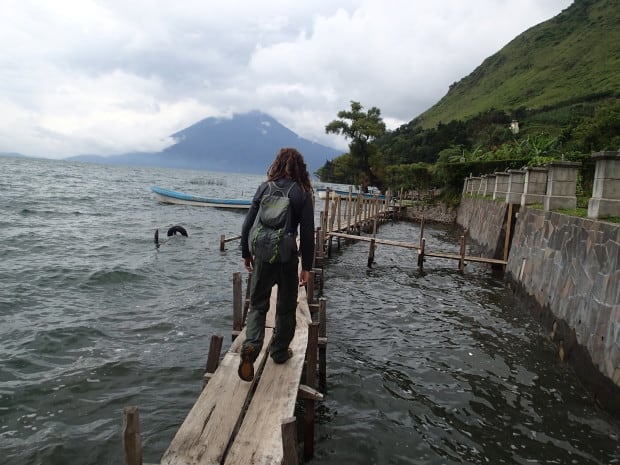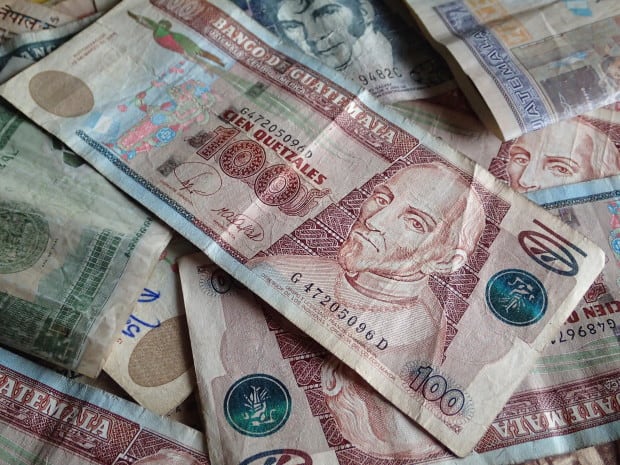Traveling indefinitely may seem to many like a rich person’s dream. One of the first thing that jumps to most people’s minds is “how could we possibly afford that?!”
In reality, long term travel does not have to break the bank. In fact, traveling long-term rather than short-term can be a wise budget decision. In 2010, my landlord asked if I could vacate the apartment for the summer so they could do some renovations. I chose to see this as an opportunity, did a little research, and bought a ticket to India. I spent three months working as a UNICEF intern and traveling around India and Nepal. I spent far LESS than I would have spent had I stayed in NYC that summer… including airfare.
Still don’t believe me? Still think travel is a luxury that only the rich can enjoy? Here’s the cost breakdown for our travels in Guatemala during the month of September:
Housing: $172
Food & Water: $225
Transportation: $96
Medical (including preventative care): $93
Miscellaneous: $218
Business Costs (mostly associated with computer repair): $583
———————————————
Grand Total: $1386
Grand Total Minus Business Costs: $803
Our grand total is less than we spent in Brooklyn, in one month, on rent alone.
How is this possible? Well, we follow a few simple guidelines.
1) When possible, we rent a house or apartment instead of staying in hotels or hostels. Even a cheap hostel can add up over the course of a month at $10/night, per person, for 30 nights. When we must stay in a hotel or hostel, we try to stay put for a week or more. Many hotels and hostels are willing to negotiate in person for a cheaper rate for guests who are willing to pay up front for a longer stay. If you can find a housesit opportunity, even better! We are staying in a beautiful house, right on Lake Atitlan, for the cost of utilities. My friend and fellow blogger, Talon Windwalker, has written a great guide for anyone interested in the many benefits of housesitting.

We stayed in this lovely hotel in San Pedro, Guatemala for less than half of their advertised price by negotiating a “long-term” (two week) rate in person.
2) We take advantage of our kitchen. Eating out usually costs more, no matter where you are. There are some exceptions to this rule if you are willing to eat street food (which we are!) but, in general, cooking and eating in saves us money. Last night, we “splurged” on a bag of rice pasta at 35Q (about $4.50 US) and made garlic butter noodles with shaved carrot salad on the side. Our “splurge” cost us about 20Q (about $2.50 US) per person to make. The average bowl of pasta at a restaurant in town costs approximately 35Q.
3) We choose to go slow and dig deep. Digging into one area instead of running through place after place keeps travel costs low. Busing from one city to the next at warp speed puts a serious dent in a budget. We are currently exploring the Lake Atitlan area in Guatemala and our transportation costs consist of boat fare between villages and the occasional 3Q ($ 0.40US) bus ride to visit our friends up above Solola. Yes, there is more to Guatemala than Lake Atitlan, but what would we really be learning anyway if we were hopping from place to place, not stopping long enough to connect with locals and learn from them?
Yesterday, the lady who sells us our empanadas in Panajachel opened up and told me about her experience during the Guatemalan genocide. Did you know that Mayans in the Panajachel area were beheaded by guerrillas and military alike? Did you know that Santiago la laguna was the lake village hardest hit by the genocide? Did you know that the citizens of Santiago la laguna stood up to the army in 1990 (without weapons!) and succeeded in ousting the military garrison? I have sat at her counter many times and this was the first time we exchanged more than pleasantries and Spanish/English corrections.That would have never happened had we dropped into the area for a week or two and then moved on to another place. Our souls and our pockets are richer because we take our time. Our friend and fellow travel blogger Jennifer Miller of The Edventure Project wrote this article in defense of slow travel. It is the first time I encountered the succinct advice “go deep instead of wide”. It’s good advice.

Slow down. Take the scenic route. Your soul and your wallet will thank you.
4) For now, we choose to visit countries where our dollar goes further. This may seem like common sense but it’s worth saying. If we were in Australia right now, that budget above would look far different! This means that we will be in the developing world for the foreseeable future. Doesn’t that make us nervous? Don’t we miss the amenities of the developed world?? No and No. We set out to understand what it means to be human across cultures and to find the threads that bind ALL of humanity, not just those of us from the developed world. And, believe it or not, many of the amenities that are considered to be exclusive of the developed world can be found most everywhere. True, there are times where we are less comfortable than we were in NYC and we no longer own an abundance of material goods…. but trading a little comfort and the Western love of material abundance for the ability to enjoy this journey for as long as it suits us is a trade worth making. Sticking to places where our dollar goes further means we can go further.
Long-term travel does not have to break the bank and moving slowly can put travel within reach for many. For those interested in traveling for longer than the standard vacation- be that for a month, a year , or indefinitely- I encourage you to research the cost of living in the countries you want to visit and compare it to your current cost of living.
You may be surprised.


